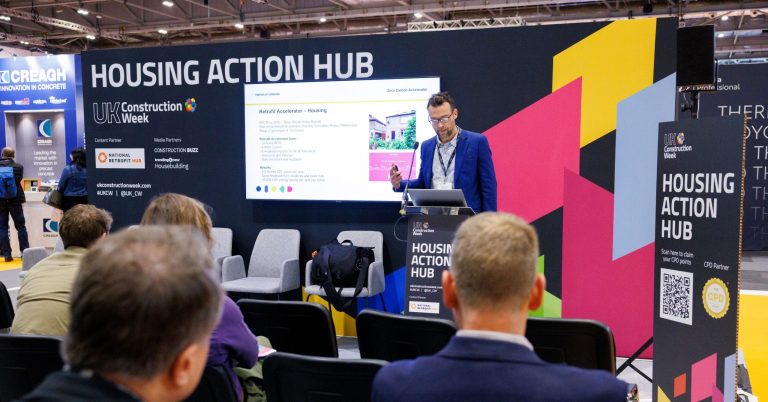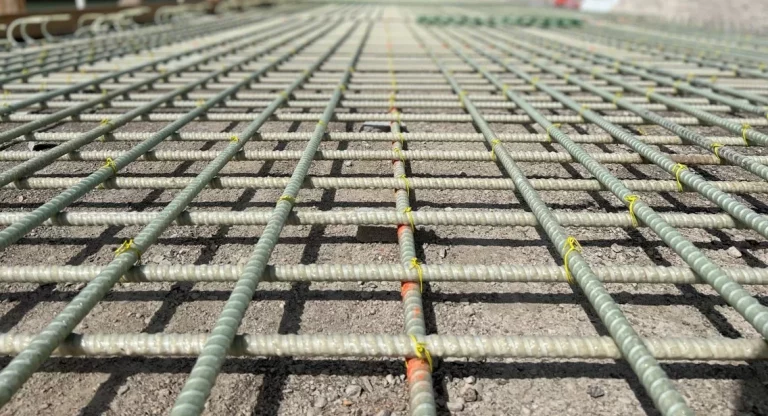UK Construction Week (UKCW) Birmingham has joined forces with the National Retrofit Hub to deliver a dedicated seminar programme on retrofit. Visitors can expect insightful sessions covering topics such as upgrading and decarbonising the nation’s housing stock, driving innovation in retrofit practices, and exploring how retrofitting is an essential strategy in the race to Net Zero. On Day Two (Wednesday 1 October), the focus on the Housing Action Hub turns to retrofit’s role in reducing whole-life carbon emissions and strengthening climate resilience, with expert-led seminars. In addition, a number of other stages at the three day event will feature Retrofit focused talks and seminars. Once again, UKCW Birmingham will place itself at the heart of this critical national conversation. Celebrating its 10th anniversary, UKCW Birmingham (30 September – 2 October, NEC) returns under the theme “where decisions are made.” Across three days, visitors will experience an unmissable line-up of big-name speakers, CPD-accredited talks, live demonstrations, product launches, technical workshops, and unrivalled networking opportunities. The programme of talks on retrofit includes: Main Stage Wednesday October 1st, 10.30am Retrofit Revolution: Meeting Citizen Demand for Warmer, Greener Homes At this session, you’ll learn about the latest research and insights on what drives demand for retrofit and decarbonisation. We’ll discuss the critical role householders play in enabling the transformation to low-carbon, low-cost, healthy homes, and how we all can better work with citizens to increase uptake and grow the retrofit sector. Speakers: Housing Action Hub Wednesday October 1st, 12.15pm Enabling Retrofit Innovation : RetroNetZero This seminar will present tools and resources published by the project that can help innovators and specifiers alike. We’ll explore regulatory pathways, discuss where innovators need to go to test and demonstrate their solutions and consider how regulation can better realise the health co-benefits of retrofit. Speakers: Wednesday October 1st, 1.15pm Retrofit Connect: Birmingham & Stoke Update on Street Demos A panel of experts will showcase pioneering stories from the Retrofit Connect programme – part of the National Retrofit Hub’s strategy to enable equitable, locally led retrofit at scale. Speakers: Wednesday October 1st, 2.15pm Retrofit and Whole Life Carbon: What’s the Consensus? The UKCW panel dives into practical strategies for transforming existing structures into climate-resilient, low-carbon assets—from smart energy upgrades to sustainable materials. Join experts to explore how retrofitting can drive environmental impact, meet rising tenant demands, and future-proof the built environment. Speakers: Net Zero Hub Wednesday October 1st, 2pm Building a Sustainable Future: Retrofitting for Climate Resilience This session will bring together those behind some of the big standards, campaigns and solutions for reducing whole life carbon emissions, particularly in the retention and retrofit of existing buildings. The conversation will be far-reaching and consider policy, materiality, economics, and community needs. Speakers: To help attendees get the most out of the show, UK Construction Week has launched its handy web-based app. Visitors can quickly build a personalised itinerary of talks, book meetings and navigate the floorplan, including viewing the Net Zero Trail, all from the palm of their hand. Neil Gaisford, Divisional Director, Construction, commented: “Retrofitting buildings has never been a more crucial part of construction and the pursuit of Net Zero, hence why we’re dedicating so many hours of UKCW seminars to discuss and dissect this important topic.” Alongside over 300 leading brands from around the world, UKCW Birmingham will feature 200 speakers and over 150 hours of seminars and talks across five stages – all of which are CPD accredited. Visitors will also be able to hear from a stellar line-up of speakers across the Culture Change & Skills Hub, Net Zero Hub, Housing Action Hub, and Roofing, Cladding & Insulation Hub. Visitors to UKCW can also elevate their experience with an exclusive VIP Pass for just £99 per day. The pass allows VIP guests to skip the queues with fast-track entry, relax in the exclusive VIP Lounge with complimentary coffee, a range of alcoholic and soft drinks, and a dedicated Wi-Fi network throughout the day. Free parking at the venue is also included in the purchase of the ticket. To register for UKCW Birmingham for free, visit https://forms.reg.buzz/ukcw-birmingham-2025/cab-pr To download the show app, visit https://www.ukconstructionweek.com/ukcw-app. Building, Design & Construction Magazine | The Choice of Industry Professionals







